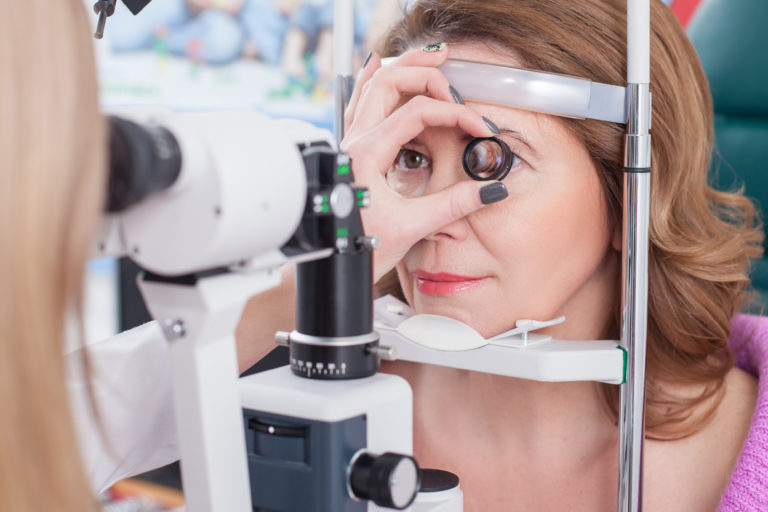
November 17, 2017
Diabetics, We're Talking to You
November is Diabetic Eye Disease Awareness Month. Let's talk detection, prevention, and treatment.
November is designated Diabetic Eye Disease Awareness Month. Diabetes is the leading cause of blindness in working-age Americans*, which makes looking out for your eye health as a diabetic all the more important. We use this month as an opportunity to remind those living with diabetes to take proactive steps to protect their vision.
What is diabetic eye disease?
With diabetes, the body can't use or store sugar properly and damages retinal blood vessels in the eye, causing them to swell, bleed or leak fluid, distorting vision. The damage to the blood vessels causes diabetic eye disease, also known as diabetic retinopathy. Diabetic retinopathy is the leading cause of vision loss and blindness in diabetic adults.
Am I at risk?
We know that the longer a person lives with diabetes, the greater their risk of developing diabetic eye disease. We also know that some populations are at a greater risk than others, including African Americans, American Indians, Alaska Native, Hispanics and older adults. Overall, the National Eye Institute reports that between 40 and 45 percent of those with diagnosed diabetes have some degree of diabetic retinopathy.
Detection
Diabetic eye disease may offer little to no symptoms in its early stages, however, symptoms may include floaters, blurred vision or double vision, or difficulty reading or doing close work which can indicate that fluid is collecting in the macula. The macula, the light-sensitive portion of the retina, can have fluid buildup called macular edema. Therefore, it's important to take the proper precautions. Diabetics are highly recommended to have a comprehensive dilated eye exam scheduled with their ophthalmologist at least once a year.
Sometimes, vision loss due to diabetic retinopathy cannot be regained. According to the American Academy of Ophthalmology, however, even 95 percent of those with significant diabetic retinopathy can avoid substantial vision loss if they receive timely treatment.
Prevention
The severity can be limited or prevented by, first, proper diabetes management. This includes close monitoring and control of blood sugars, blood pressures, and blood lipids, adding more physical activity, and maintaining a healthy weight. Control of any one of these risk factors can reduce the severity of diabetic retinopathy.
Treatment
if diagnosed with an early stage of the disease, immediate treatment may not be needed. If treatment is prescribed, diabetic retinopathy is commonly treated with intravitreal injections, laser photocoagulation to help seal off leaking blood vessels, or a procedure called a vitrectomy.
We're here to help. Wolfe Eye Clinic has vast experience in diagnosing and treating diabetic-related eye conditions. To learn more, for questions, or to schedule an appointment with one of our Retina Specialists, call (800) 542-7956.
Dr. Alex Kartvelishvili
Dr. David Saggau
Dr. Jared Nielsen
Dr. Kyle Alliman
Dr. Paul Boeke
*https://www.nei.nih.gov/learn-about-eye-health/outreach-resources/diabetic-eye-disease-resources/national-diabetes-month